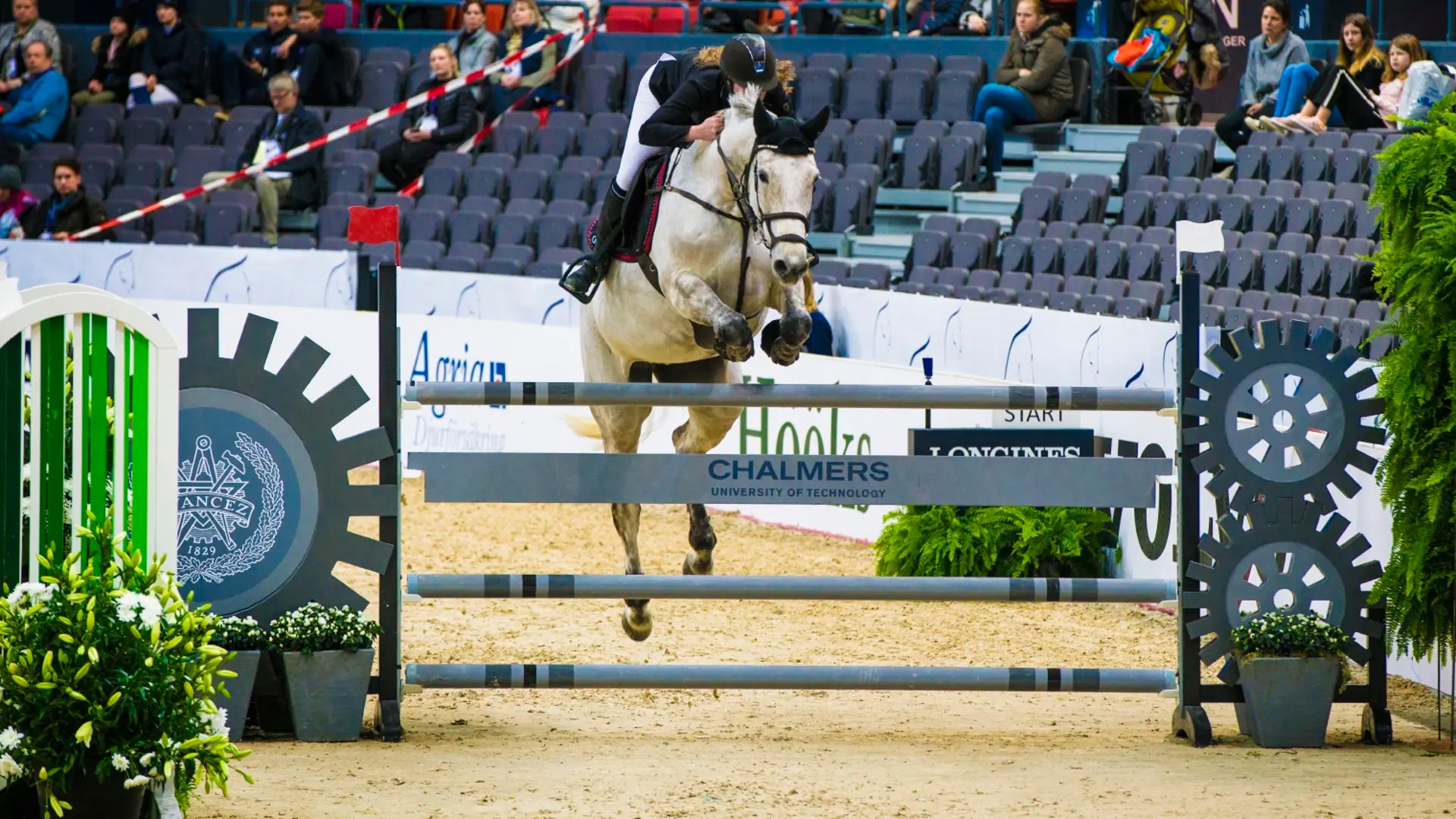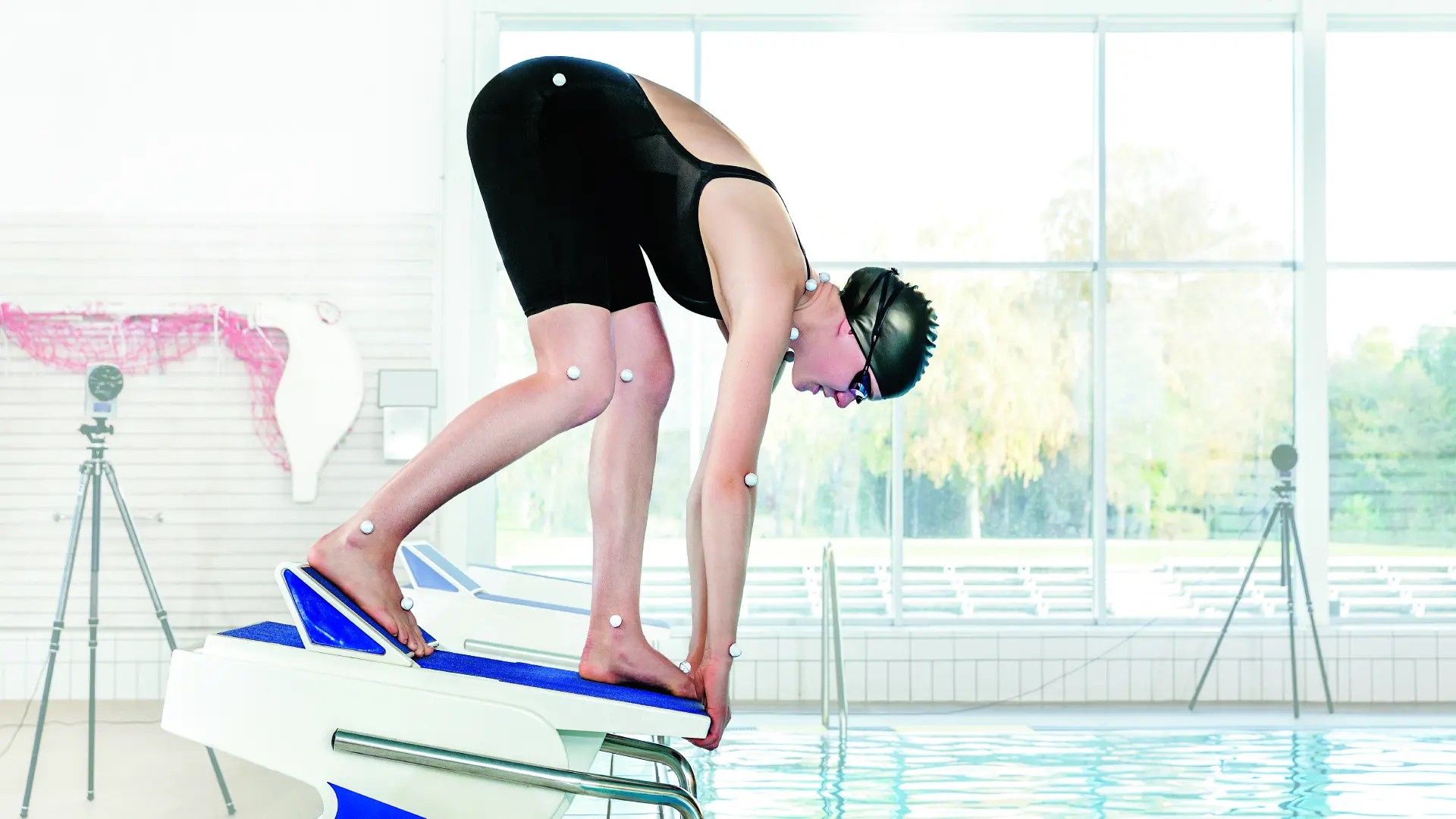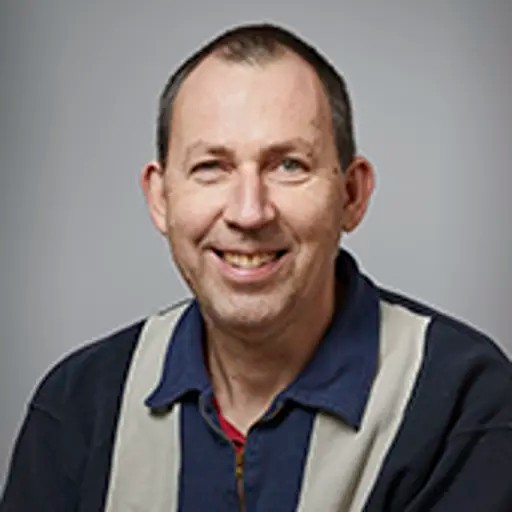We collaborate with athletes, coaches, enterprise and governing bodies to improve performance and safety for athletes in a number of sports. Most of our projects involve both senior scientists and students.
Sports research spans many of our departments and involves researchers from different fields
Numerous sports allow for applications. Presented here are some sports in which we are actively involved.

Equestrian sports
Equestrian sports involve two athletes – the rider and the horse – but only one of these can tell us how they feel. Chalmers works on behalf of horses’ welfare by developing materials, measuring instruments and measuring methods that do not cause horses stress or pain.
Horses easily become stressed by unfamiliar situations and pain. When, for various reasons, it is necessary to examine a horse it is therefore a major advantage when traditional equestrian equipment, with which the horse is familiar, can be used for taking measurements. This can, for example, be achieved by integrating smart textiles in horse-cloths, girths and bandages.
We work in many different areas, among other things to simplify the teamwork between rider and horse, find and heal injuries, improve equestrian surfaces, customise equipment and find solutions for the efficient usage of manure in biogas production.

Swimming sports
In competitive swimming events, starts and turns are frequently decisive, because swimming speed is strongly dependent on velocity during breakouts. Chalmers make advanced 3D movement analyses and develop sensor systems that are useful to both competitive swimmers and those swimming for exercise.
Cycling
Road cycling is one of the most advanced sports in measuring, logging and analysing data. The data is used to better plan training and competition and to scout talent. This is not an easy challenge to handle with manual methods. Chalmers is participating in projects to use data-driven methods to find answers to a number of questions that can be used to improve performance.
In collaboration with one of the world's best professional cycling teams, we have developed special neural networks adapted to handle long time series, so-called "Long-Short-Term Memory (LSTM) networks".

Photographer: Hasti Razaghi
Skiing
Ever since ancient times, skiing has been an efficient way to move in snowy terrain. Skiing emerged as a competitive sport in the latter part of the 19th century and it has since then been divided into several different disciplines: cross-country (or Nordic) skiing, downhill skiing, ski jumping etc.. Although somewhat similar, the different disciplines put very different demands on the athletes as well as on the equipment.
At Chalmers, we have studied cross-country and downhill skiing, coming from two different angles: performance measurements and improved materials and equipment.
Athletics
In athletics, there are many problems to work with. For example, Chalmers works with high jump, pole vault and running. There are research and education projects related to both the athlete and the equipment.
For example, the high jump is a complex biomechanical movement in which mainly horizontal movement energy is converted into positional energy. Athletics coaches often work with video and image analysis, but it is a challenge to translate the video material into concrete metrics that directly correlate with the high jumper's performance. In this project, the Chalmers students have investigated whether there is a correlation between the performance of the jumpers and the measured key figures. The students hope that the knowledge gained will not only contribute to a new technical solution for analysis, but also to injury prevention and improved performance among athletes.

Students want to improve the Swedish high jump
Six Chalmers students are currently working on a high jump project on behalf of the Swedish Athletics Federation. They are doing the project as a Bachelor's thesis, with the goal of developing a user-friendly technology, a prototype that can easily be used in everyday life to give athletes and coaches better opportunities for analysis and development.
Orienteering
Orienteering combines physical endurance with advanced navigation skills. Athletes must run fast through demanding terrain while making quick and accurate map-based decisions. The sport of orienteering is a great source of inspiration for research in artificial intelligence and more. At Chalmers, we study how orienteers perceive and process spatial information, and how technology can support training and performance.
We develop AI methods, sensor-based analyses and interactive applications to better understand how athletes localize themselves and how errors occur under stress. This research not only benefits sports science and training, but also connects to wider challenges in robotics, autonomous navigation and spatial intelligence.

